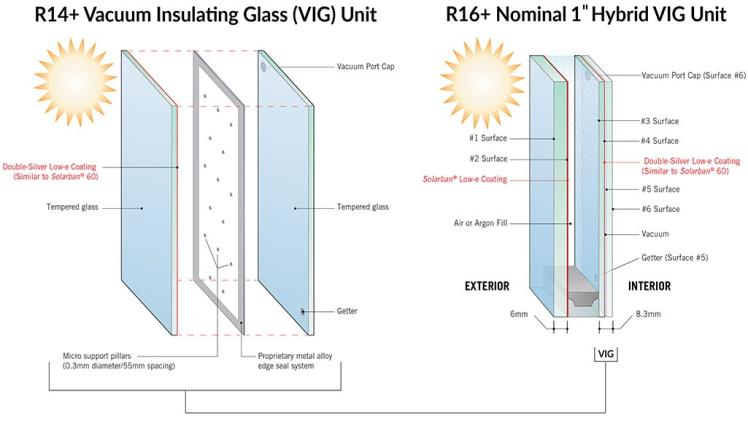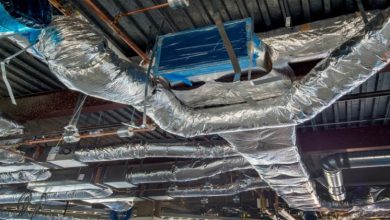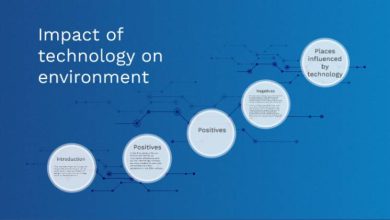Tempered Vacuum Double Glazing

There are a number of factors to consider when looking at double glazing for your home. These factors include the cost, insulation effectiveness, and acoustic attenuation. This article will discuss these factors and their respective challenges.
Insulation Effectiveness
In order to understand the insulation effectiveness of tempered vacuum double glazing, we performed a laboratory study in a thermally broken aluminum frame. This frame had an insulation performance of 0.69 W/m2K. The insulation performance was measured using Korea national standards.
Vacuum insulating glass provides superior thermal performance over traditional double and triple glazing. Its lightweight and thin profile make it ideal for retrofit applications. Furthermore, it has been found to be suitable for heritage buildings. A high level of insulation is also achieved because it does not allow the formation of condensation.
For optimal insulation performance, the low-e coating surface should be placed inside the vacuum layer. To do this, the indoor surface of the glass was covered with the low-e coating. This was called LE-5. Compared to the LE-2, LE-5 had a lower U-value. Triple vacuum insulated glazing had lower U-value than LE-5, but the heat flow was higher. This is due to the difference in the indoor and outdoor temperature.
Costs
Vacuum insulated glass (VIG) is a unique alternative to gas-filled double-glazed units. It is a thin profile, light weight, and has excellent thermal performance. VAG glazing is not cheap. However, it has the potential to reduce energy costs and increase the durability of the insulation over a longer service life. As more manufacturers begin to use it, the cost of VIG is likely to go down.
Vacuum insulating glazing has the potential to lower the U-value of a window by about 0.2 W m-2 K-1 and 15 years warranty VIG. This is close to the U-value of a well-insulated wall. The lower U-value of a window is important for energy efficiency. It is also critical for safety. Since vacuum insulated glazing has a low profile and does not impede convection, it is less susceptible to breaking.
Compared to standard glazed IGUs, vacuum insulated glazing has a higher strength-to-weight ratio, making it more durable. It is also more energy efficient. While the cost of VAG is not cheap, it is much more affordable than conventional gas-filled double-glazed units. In addition, it is available in a variety of sizes. Please visit for more updates: Ifvod Tv
Acoustic Attenuation
For a double glazed unit to provide the best acoustic insulation it needs to be able to reduce the amplitude of the sound. This can be achieved through a variety of techniques. One of the best is by increasing the glass thickness. Acoustic attenuation can be enhanced by adding a layer of acoustic film to the outer glass layer. The film can be a mono-layer or a tri-layer. It works by dissipating the energy of bending waves.
A single pane of 5 mm thick glass can filter out about 30 dB of noise. However, this is not ideal for lower pitched sounds. As the thickness increases, the trough is shifted to a lower frequency. A typical opaque facade can have a sound reduction index of around 40 dB. These measurements are calculated using a logarithmic formula. In addition, a computer program is used to determine the “mean sound attenuation value” from the admitted volume of sound.
When double glazing is combined with a laminated safety glass, the acoustic attenuation is significantly improved. The acoustic attenuation for a single pane of 9 mm thick laminated safety glass is about 53 dB.
Challenges
For a decade, commercially available vacuum-insulated glazing has promised double thermal performance. This promise has made it attractive for retrofit applications. However, the cost of such windows has become significant. A study analyzed the thermal performance of vacuum glazing and the effects of different glass types and support pillars. The results showed that the vacuum glazing with low-e glass had a better insulation performance than conventional high-performance glazing.
The performance of the vacuum glazing was optimized by varying the position of the pillars, the type of glass, and the position of the vacuum layer. Results revealed that the optimal pillar spacing was 40 mm. Thermal performance was further optimized by using low-e coatings on the inner surface of the vacuum layer. The outer edge was placed into an XPS insulation material. This resulted in a decrease in thermal radiation between parallel glazing panels. The vacuum-glazed window exhibited lower indoor heat loss than the triple-glazed window. As a result, the heating energy used in the building was reduced by 24%.
More Word
Tempered vacuum double glazing (TVG) is an innovative window technology. It is designed to achieve a flat surface and provide superior insulation performance. These benefits include excellent noise reduction and great energy efficiency.




